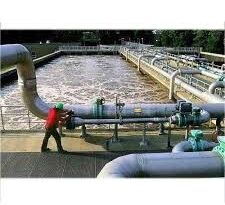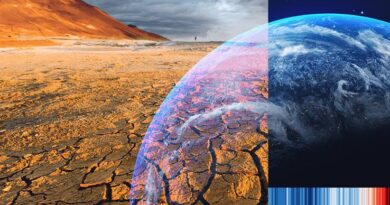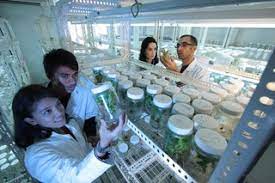Effects of Pollution on Fish, Algae, Zooplankton, Benthic Organisms, and Water Quality
Pollution affects different living organisms in the aquatic environment differently. This has made it necessary to discuss the effect of different pollutants on fish, plankton, benthic macroinvertebrates, algae, and water quality.
The effects of pollution in water are experienced by all aspects of the aquatic environment including fish, phytoplankton (primary producers), zooplankton (consumers), benthos, and water quality. The sediments serve as reservoirs for pollutants and may recycle such depending on prevailing environmental conditions.
Effects of Pollution on Fish
Fish are sensitive to many pollutants and are often used as indicator organisms in bioassays. They can move out of polluted areas under natural conditions. Fish are indirectly affected by organic matter through the reduction of oxygen in the water and direct exposure to various toxic organic pollutants. Low dissolved oxygen can kill fish.
Most fish require at least 5mg/l D.O. but some fish survive about 2mg/l of minimum dissolved oxygen in the water. Examples of toxic substances in water are:
a) Ammonia is a pollutant and its toxicity depends on the pH of the water. It can be lethal to most species of fish at concentrations above 0.1ppm at alkaline pH levels.

b) Cyanide is extremely toxic to fish with LC50 values (concentration at which 50% of the test population die) below 1mg/l for most fishes.
c) Pesticides affect the growth and reproduction of many species of fish and small quantities of pesticides can prevent eggs of fish from hatching. Chlorinated pesticides are more toxic than others.
Toxic concentrations of some pesticides to fish are aldrin (0.02), chlordane (1.0 ppm), dieldrin (0.025), and endrin (0.0003) ppm.
d) Fish are sensitive to different detergents as they damage the gill epithelium of fish. Fishes have LC50 for detergents between 1-10ppm.
e) Most heavy metals (mercury, cadmium, chromium, arsenic, and copper) are toxic to fish and exposure may induce respiratory distress. For instance, lead and cadmium can kill fish at 0.33ppm and 0.06mg/l respectively.
f) Thermal pollution lowers the disease resistance of fish and pollutants are more toxic at higher temperatures. Fish may be unable to capture food at elevated temperatures and thermal death
can occur.
g) Polychlorinated biphenyls (PCBs) are common pollutants in rivers and other surface waters. They are extremely toxic to fish at very low concentrations of 0.005ppm. At sub-lethal concentrations, they can cause premature hatching of eggs.
h) Phenols can also cause the death of fish but are more toxic at a lower temperatures.
Effects of Pollution on Algae
Heavy metals are highly toxic to algae. For instance, copper can kill all species of algae at low concentrations of 0.5mg/l. Mercury in the range of 0.01ppm can damage algal growth with Chlorophyceae being more sensitive than others. Concentrations of heavy metals within safe limits for fish may be toxic to several algal species.
Marine oil pollution can affect the phytoplankton with algal cell division and photosynthesis inhibited at oil concentrations as low as 0.01ppm -0.02ppm. In freshwater, Chlorophyceae is the most susceptible to petroleum oils.
Thermal pollution of waters for extended periods can replace diatoms with green algae and later by blue-green algae. PCBs reduce the rate of cell division in many phytoplankton.
Effects of Pollution on Zooplankton
Zooplankton consume algae and changes in algal communities affect zooplankton species depending on their food preferences e.g. some zooplankton species do not eat blue-green algae and are replaced by those that eat them. Pollution decreases zooplankton diversity. Some important effects of pollution on zooplankton are:
• In severe oxygen limitation, protozoa can replace other zooplankton.
• The important tolerant species of zooplankton are Hexotrichia caudate, Glaucoma scintillans, Metopusspp, Vorticella spp, Colpidiumcolpoda, Saprodiniummicrostoma , and Uronemamarium, etc. which can replace sensitive species.
• Thermal pollution has a lethal effect on most zooplankton with high temperatures increasing the toxicity of many chemicals many times to zooplankton.
• Low oxygen levels enhance the toxicity of hydrogen sulphide and other pollutants to several zooplankton.
• At high concentrations, pollutants can kill most zooplankton. Cladocera, Diptera and Daphnia are very sensitive to toxic metals. Copper is extremely toxic to most zooplankton.
Read Also: Sources and Management of Groundwater Pollution
Effects of Pollutants on Benthic Organisms
Benthic organisms are bottom-dwelling organisms of the aquatic environment. Fish and other motile organisms can move out of polluted areas but macroinvertebrates cannot and are impacted by pollution. For this reason, they are widely used as indicator organisms for aquatic studies.
Many sensitive species are replaced by highly tolerant species. Sensitivity to pollution decreases in the order:
Stoneflies (Plecoptera) >mayflies (Ephemeroptera)>caddisfly
(Trichoptera)>Amphipods >Isopods>midges (Diptera) >Oligochaetes.
In highly polluted waters, most macroinvertebrates are eliminated but leach, sludge worms (Tubificidae), bloodworms (Chironomus larvae), sewage fly, and rat-tailed maggot dominate. Tubificidae is more tolerant of pollution than other insects.
Some members can tolerate moderate levels of pollution e.g. black fly larvae, scud, fingernail clam, snail, damsel fly nymph, and dragonfly nymph. The most severely affected bottom organisms in polluted conditions are stonefly nymph, mayfly naid, and caddisfly larvae.
Effects of Pollution on Water Quality
Water quality describes the chemical, physical, and biological characteristics of water which affect its suitability for human consumption (drinking, irrigation, industrial use) and ecosystem health.
The chemical constituents of water are substances that dissolve in water, including gases (e.g. oxygen, carbon dioxide), metals (e.g., iron, lead), nutrients (e.g. nitrogen, phosphorus), pesticides (e.g., atrazine, endosulfan), and other organic compounds (e.g., polychlorinated biphenyls).
The most common physical characteristics of water are color, odor, temperature, taste, and turbidity, while biological constituents of water are living organisms including bacteria (e.g., Escherichia coli), viruses, protozoans (e.g., Cryptosporidiosis), phytoplankton, zooplankton, insects, plants, and fish.
Water quality is termed as “good” or “poor” depending on the designated use of the water. For example, high nitrate content in drinking water causes a blood disorder in infants, methemoglobinemia (blue-baby syndrome), and is not suitable for drinking. It is designated “poor” for drinking but when used for irrigation, would promote crop growth and is “good” water quality for this use.
Reclaimed water must meet disinfection standards to reduce the concentrations of constituents that may affect public health and/or limit human contact with reclaimed water. Water intended for reuse should:
• Have biochemical oxygen demand (BOD) and total suspended solids levels of < 30 mg/L
• Receive additional disinfection by chlorination or other chemical disinfectants
Pathogens in water may survive for short periods, while others (e.g., Cryptosporidium) may survive for months and when consumed in drinking water, may cause illness (Crittenden et al., 2005)



